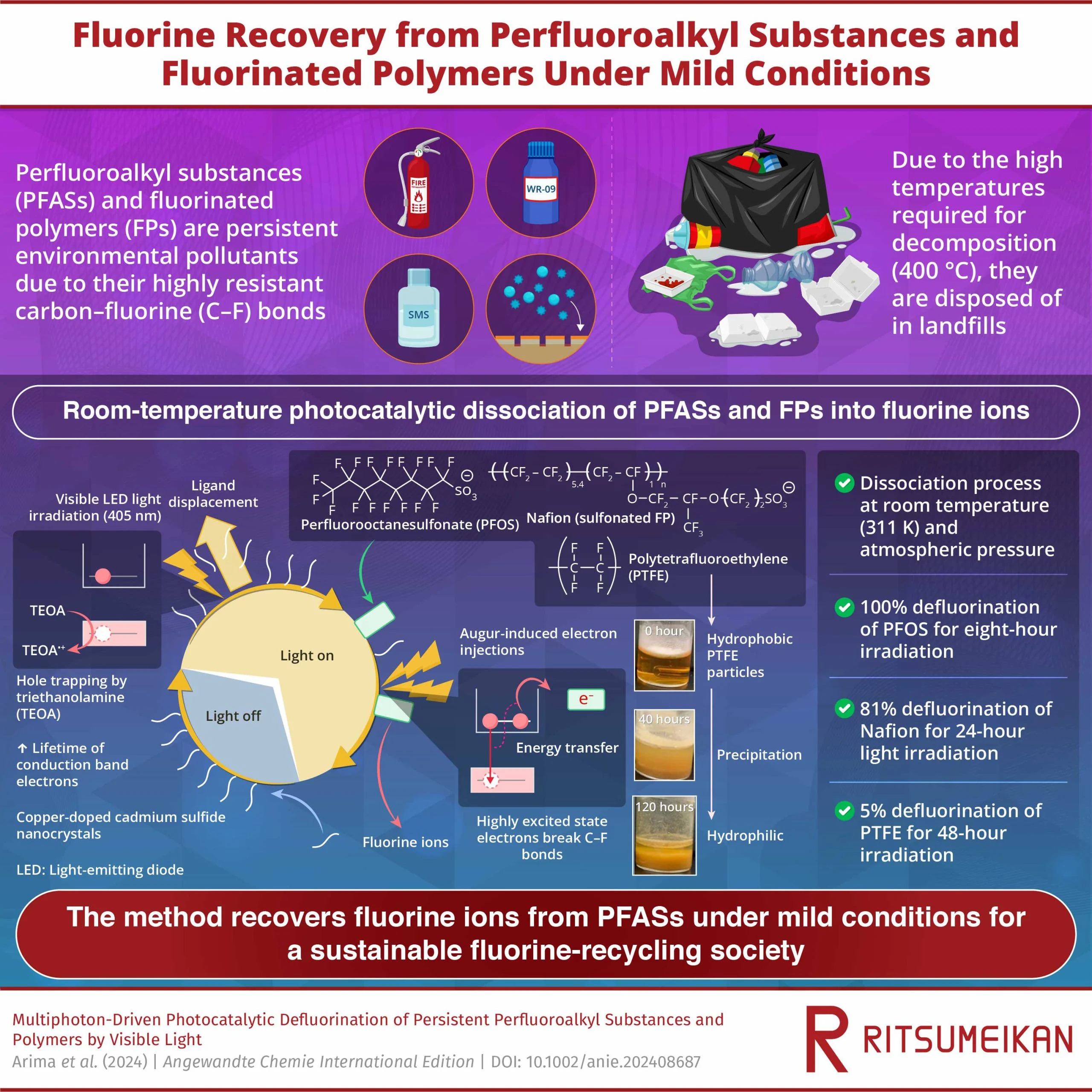"Informed AI News" is an publications aggregation platform, ensuring you only gain the most valuable information, to eliminate information asymmetry and break through the limits of information cocoons. Find out more >>
New Method Uses Light to Completely Break Down Harmful PFAS Chemicals
- summary
- score

Researchers from Ritsumeikan University have discovered a new method to completely decompose perfluorooctanesulfonic acid (PFAS) using visible light at room temperature, a harmful chemical substance commonly known as the "forever chemical." This method decomposes PFAS into fluoride ions within 8 hours, enabling sustainable recovery of fluorine.
PFAS, due to its stability, is widely used in products such as cookware, clothing, and firefighting foams, but this stability makes it difficult to decompose in the environment, posing threats to health and the environment. Traditionally, PFAS requires temperatures above 400°C to decompose, making its treatment challenging.
The new method utilizes visible LED light to irradiate semiconductor nanocrystals, efficiently decomposing PFAS into fluoride ions through a mechanism involving photoinduced ligand displacement and Auger-induced electron injection. This method is conducted at room temperature, simplifying the treatment process.
The study was published in "Angewandte Chemie International Edition," and Professor Yoichi Kobayashi, the lead author, believes that this method has the potential to effectively decompose various PFAS under mild conditions, contributing to a sustainable fluorine recovery society.
By recovering fluorine from discarded PFAS, the reliance on fluorine production can be reduced, establishing a more sustainable recycling process. This technology will promote the development of fluorine recovery techniques, which are crucial in multiple industries.
| Scores | Value | Explanation |
|---|---|---|
| Objectivity | 6 | Comprehensive reporting with in-depth analysis. |
| Social Impact | 4 | Strong social discussion, influencing some public opinion. |
| Credibility | 5 | Solid evidence from authoritative sources. |
| Potential | 5 | Very high potential to trigger significant changes. |
| Practicality | 4 | Highly practical, directly applicable. |
| Entertainment Value | 2 | Includes a few entertaining elements. |